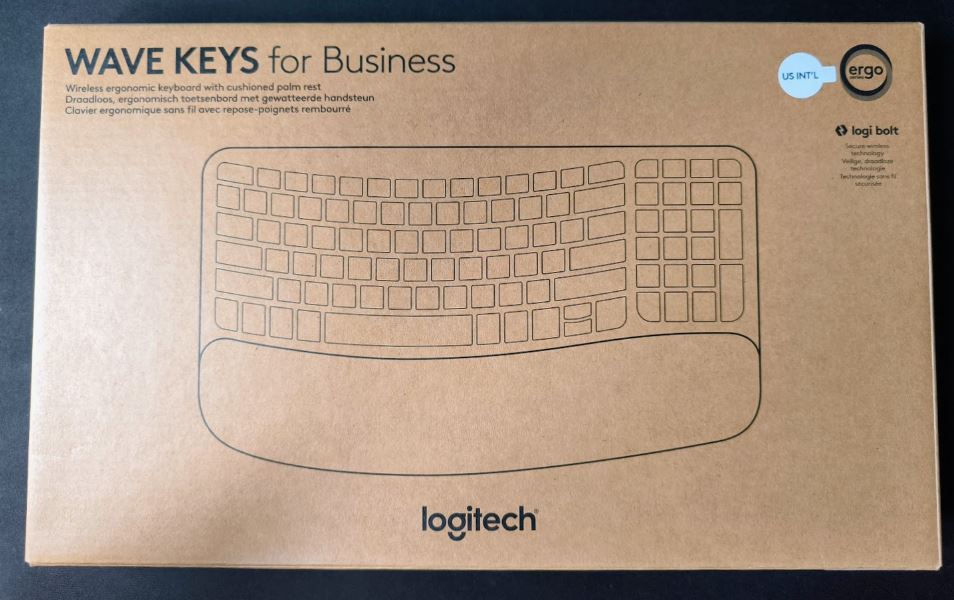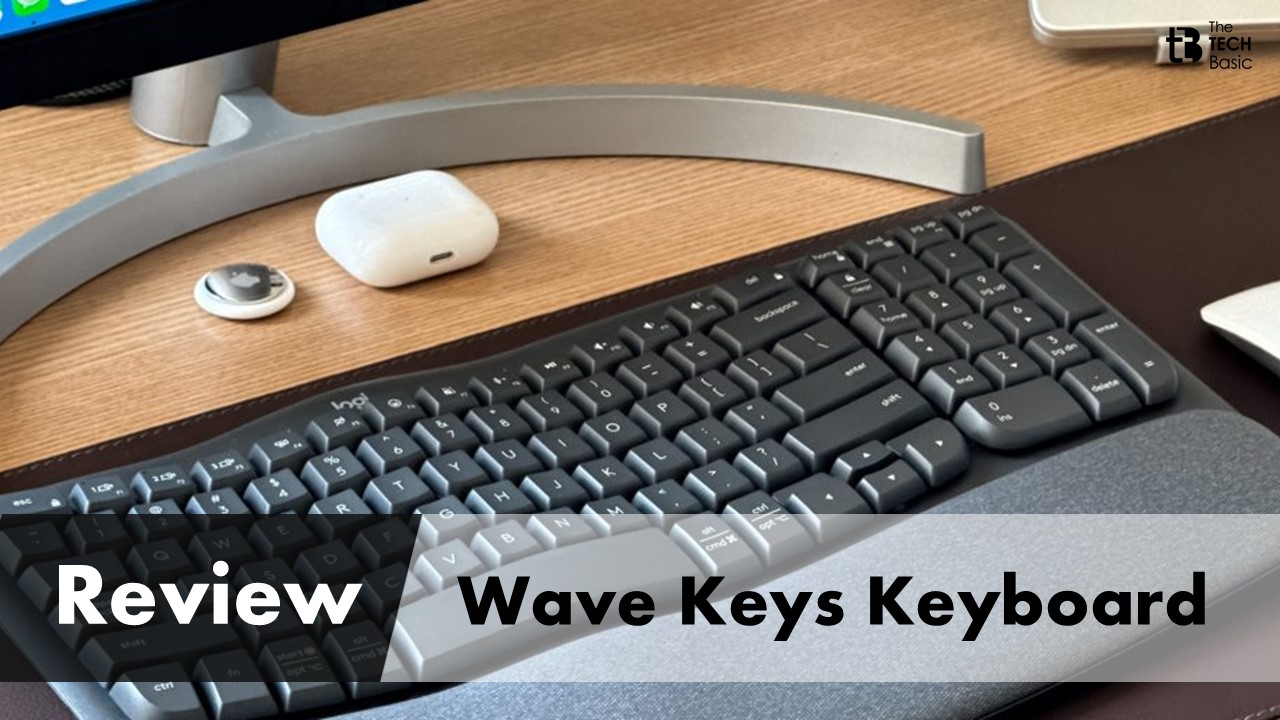Let’s start the review by noting that this time we actually have the Logitech Wave Keys for Business keyboard, which differs from the regular Wave Keys model only in its packaging. The business model’s packaging is made from understated recycled cardboard with a greyish-black ink print, while the non-business Wave Keys keyboard comes in a more attractive package. That’s all there is to it.
Please follow us on Facebook and Twitter.
The basic parameters of the Wave Keys keyboard are somewhat unusual – it can be at least partially described as an ergonomic keyboard that only mimics the operation of a mechanical keyboard. In fact, the Wave Keys keyboard is a regular membrane keyboard, even though at first glance this model looks mechanical.
The price of the Wave Keys keyboard is $60. For this price, you’ll get wireless connectivity (a USB Bolt dongle for the main computer and Bluetooth connection for other devices), a fairly comfortable and well-built keyboard, but don’t expect backlighting or other fancy features. Interestingly, in the US, this keyboard costs about 60 dollars (plus sales tax, but still…), which might be the true value of the keyboard.
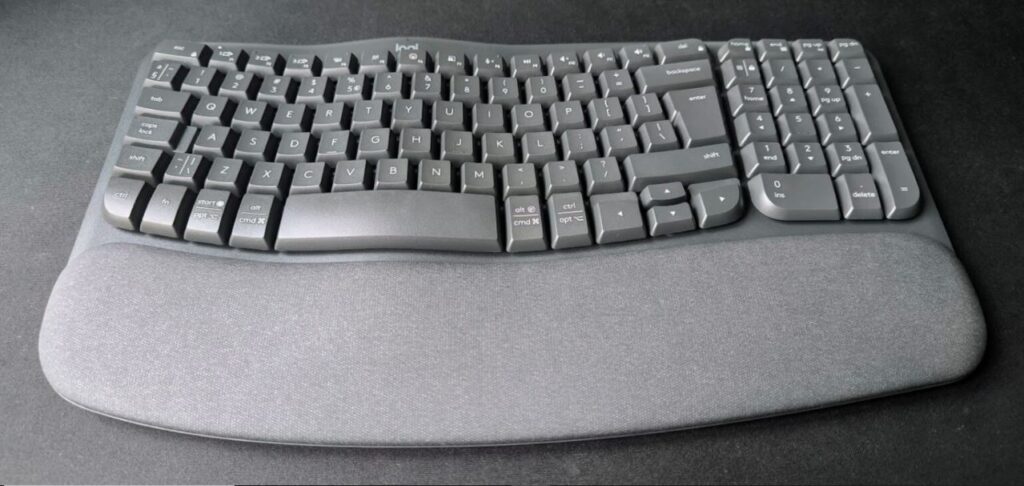
The Wave Keys keyboard will pair quite well on a desk with an ergonomic Logitech mouse, at least judging by the chosen colors.
Appearance and Structure
The Wave Keys for Business ergonomic keyboard is indeed ergonomic, and nothing here is exaggerated, as is often the case with other ergonomic computer accessories. What I mean is that you won’t have to spend weeks retraining yourself to use this keyboard, as is often necessary with other ergonomic solutions. Yes, the keys are slightly curved in a wave shape with a rise at the Y, H, and N keys, and the Tab, Shift, and Ctrl keys on the left side are also slightly raised. But overall, it provides a comfortable feel almost immediately, without the struggle of retraining yourself.

If anything feels strange at first, it’s the bulky Space key, and the entire bottom row of keys is nearly twice as wide. I haven’t figured out why they made it so wide, but there might be some reasoning behind it. However, I haven’t been able to grasp it.
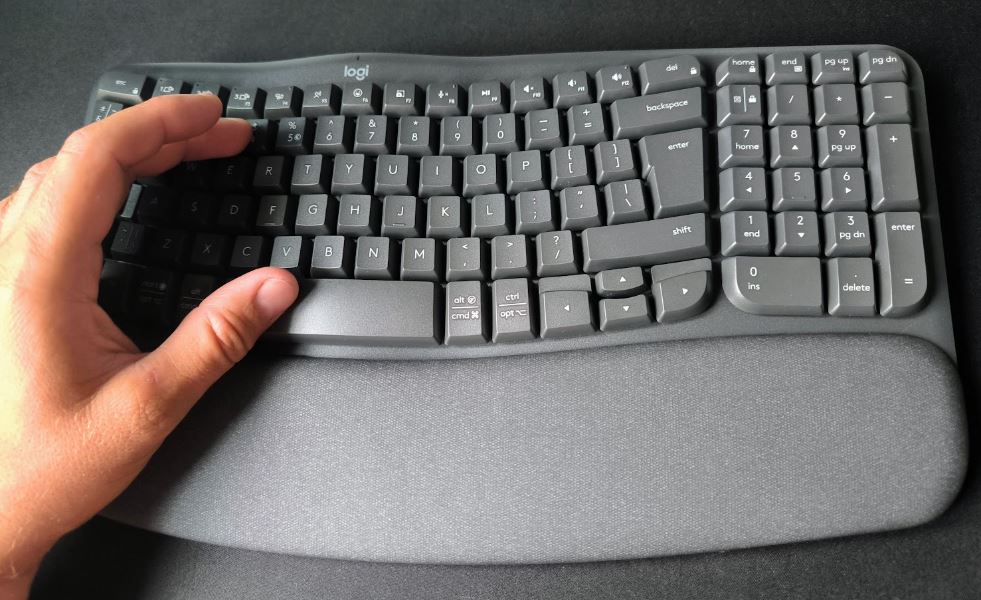
By the way, I’m trying to write this review using the Wave Keys keyboard despite my unfamiliarity with the ISO key layout. I’ve always worked with the ANSI layout, and ISO is foreign to me; I can’t seem to understand its practical use.
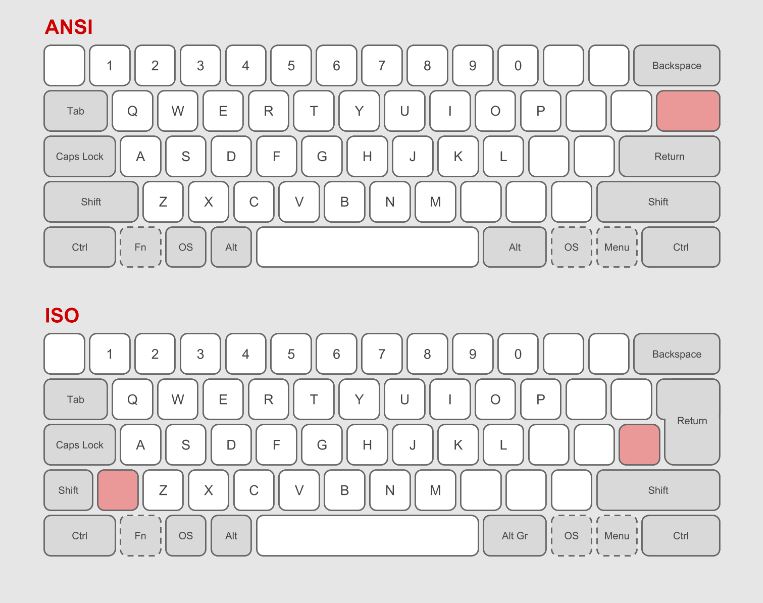
Many people might appreciate the built-in wrist rest. Don’t misunderstand the image below; nothing there is removable, and you can’t change the colors either. Logitech presents the different padding in a somewhat strange way. For this price, though, a detachable wrist rest would have been nice.
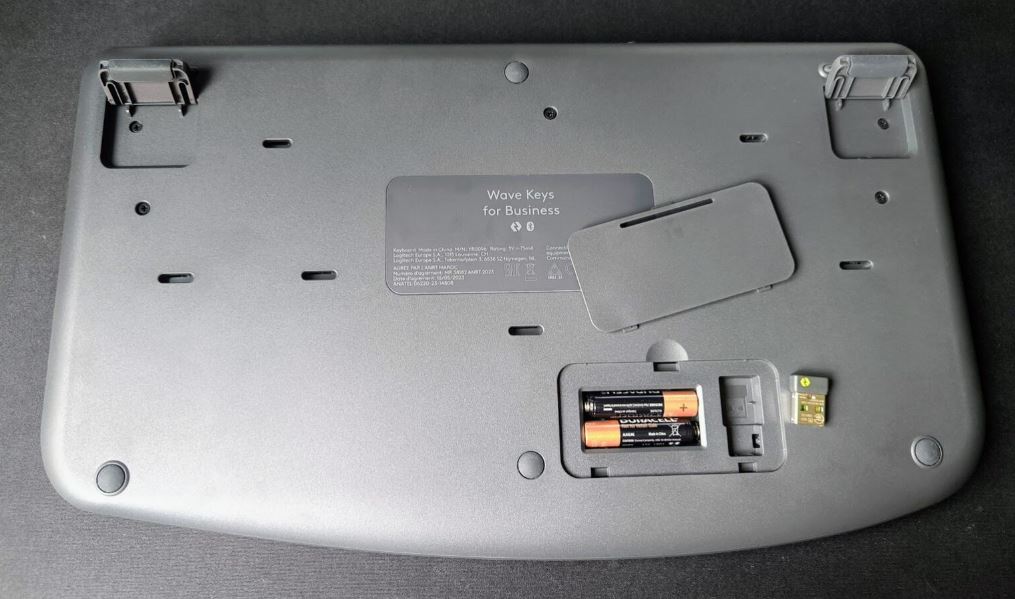
If you place too much weight on the wrist rest, you might accidentally lift the back part of the Wave Keys keyboard off the desk. This could likely be blamed on the slightly rounded plastic underneath the wrist rest area. The possibility of lifting the back of the keyboard off the desk is quite real, though it largely depends on your wrist placement, but I can’t forgive this flaw in an ergonomic keyboard.
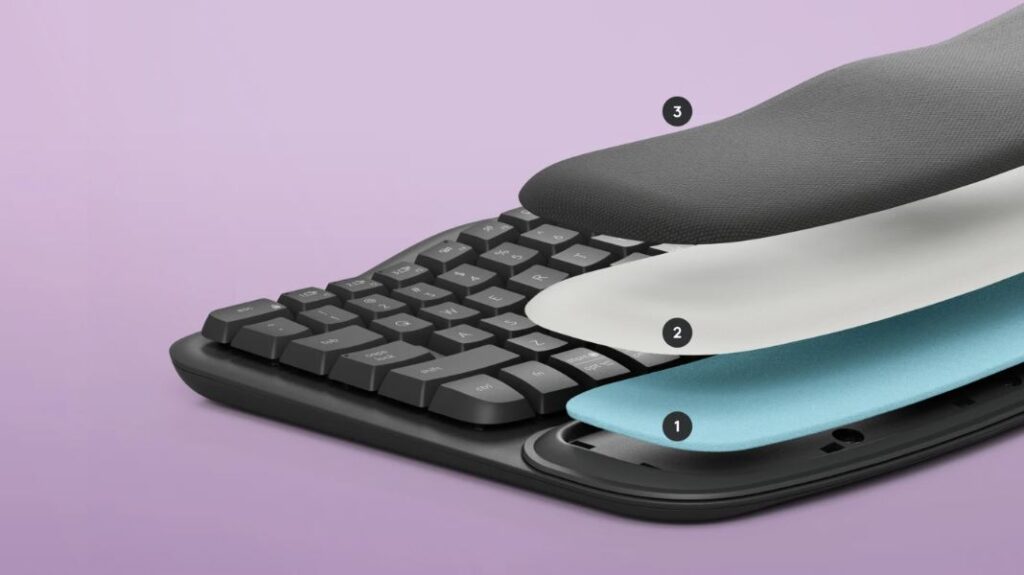
On the bottom of the Wave Keys, there are small feet to tilt the keyboard towards the user, as well as a cover for battery replacement, and beneath it, there’s a spot for storing the USB dongle. At least the manufacturer promises that with one set of batteries, the Wave Keys keyboard will last for 36 months. There’s no option to connect a cable, so you’ll have to change the batteries when needed.

Interestingly, even for this membrane keyboard, the keycaps are removable, just like on mechanical keyboards. This doesn’t add much value unless you plan to thoroughly clean the keyboard. The area around the removed keycap is raised, probably designed to prevent coffee or crumbs from getting inside the keyboard.
Overall, I would say that the build quality of the Wave Keys keyboard is not bad, but it’s still at least quite mediocre when we’re talking about a membrane keyboard that costs $60. For $60 to $100 these days, you can already buy a top-notch mechanical keyboard with full backlighting and an aluminum build. Of course, you might have to use a wired connection in that case.
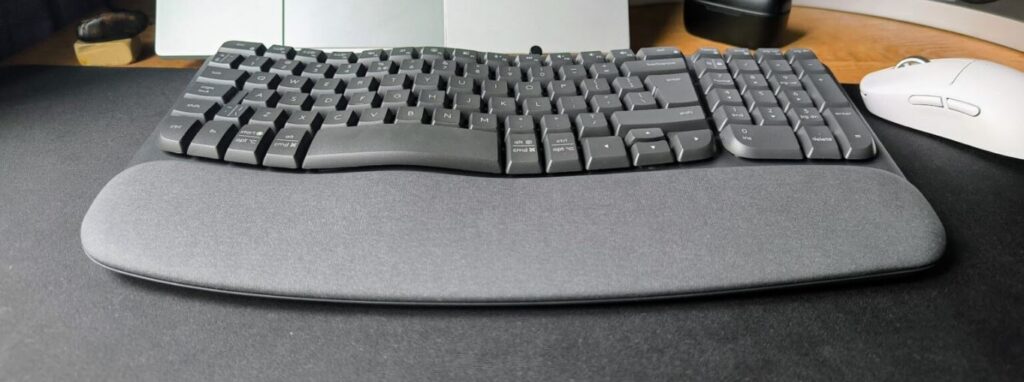
If you really want to pat yourself on the back for making a great and eco-friendly choice, the Wave Keys keyboard offers that too. It comes with a whole bunch of certifications and promises of a beautiful future. This could be quite important for business clients.
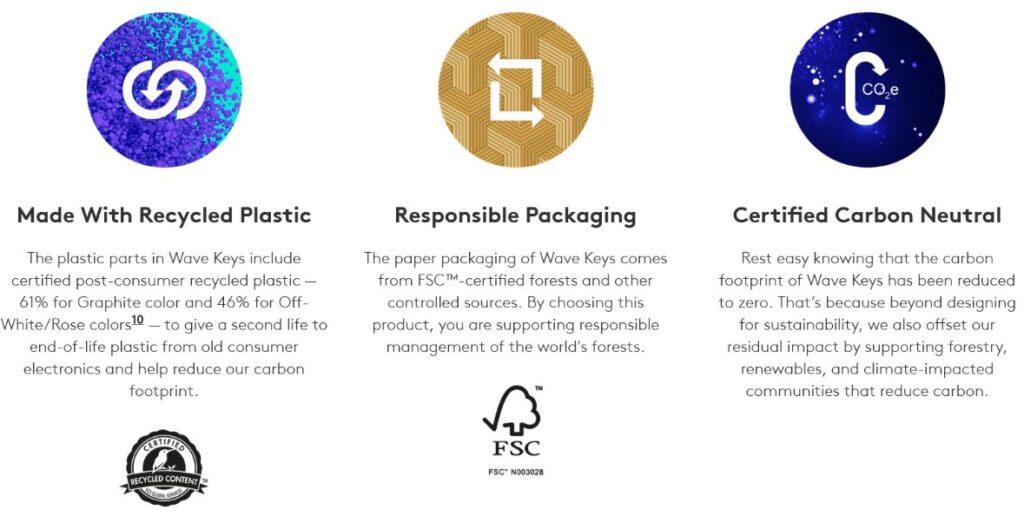
Software
The Wave Keys keyboard is compatible with the Logi Options Plus (Options+) app, which is suggested for installation as soon as you connect the USB wireless dongle to your computer. The Logi Options+ app allows you to update the keyboard’s firmware and connect it to other devices via Bluetooth. Additionally, the app offers some customization options for the keyboard’s key settings, but it isn’t strictly necessary—the keyboard will work without it.
With the Logi Options Plus app, you can even create keyboard shortcuts to quickly launch your most frequently used applications. In that case, however, you won’t be able to do without installing Logi Options Plus on your computer.
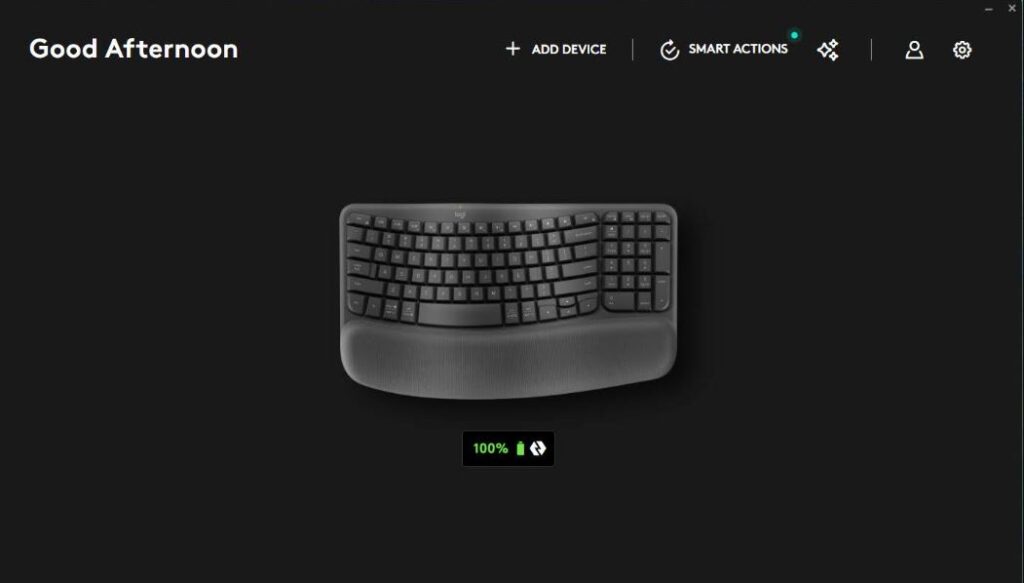
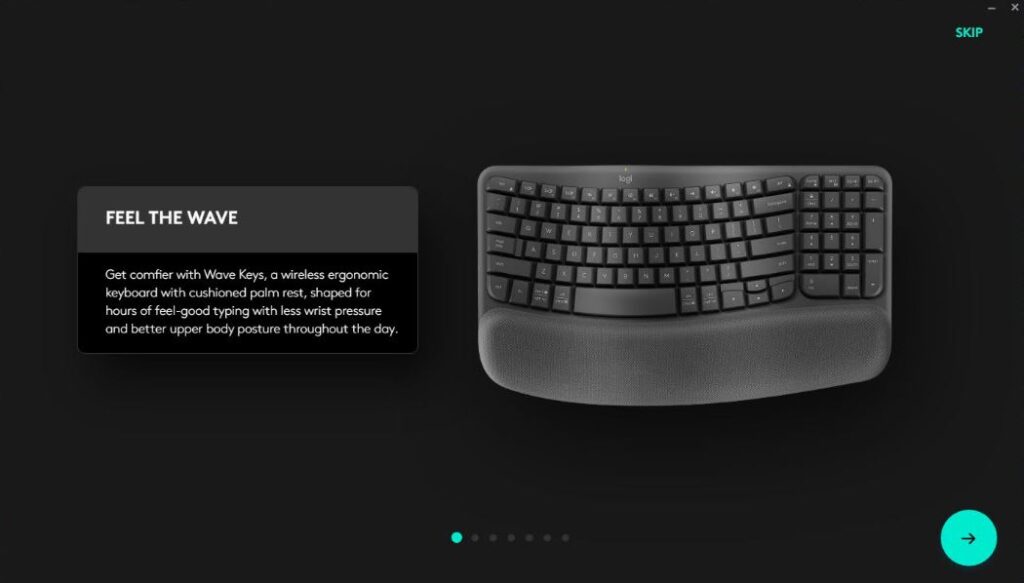
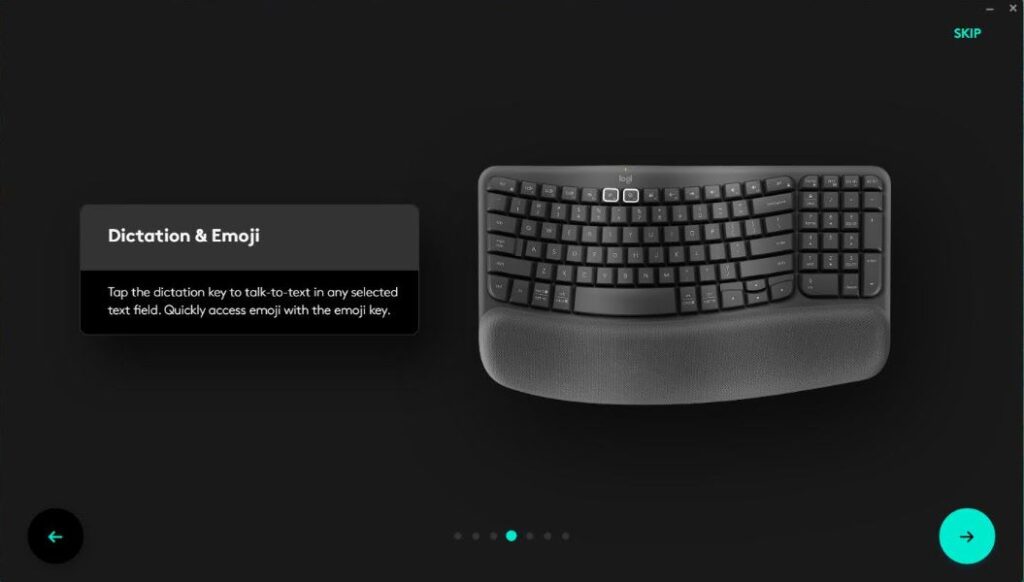
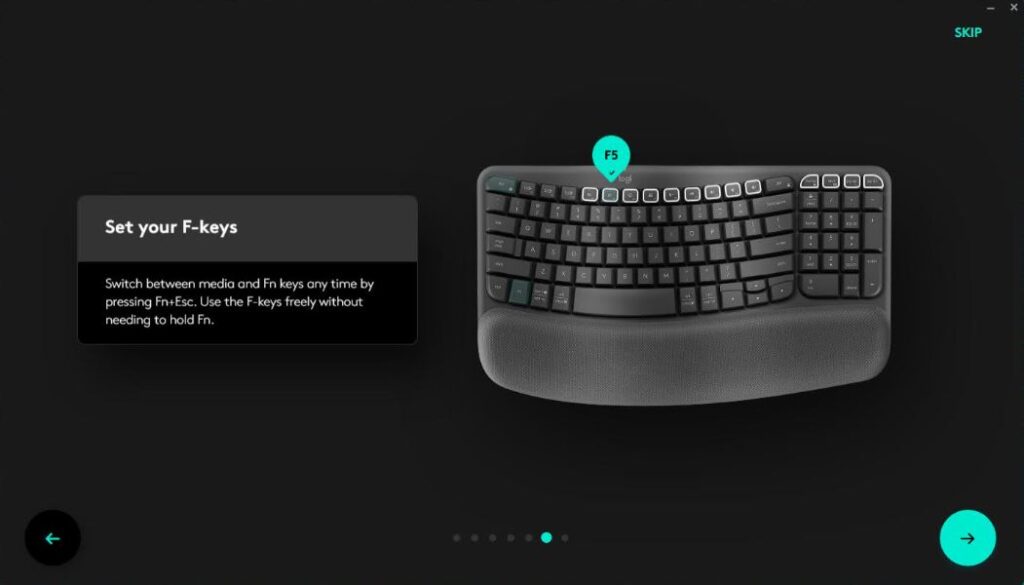
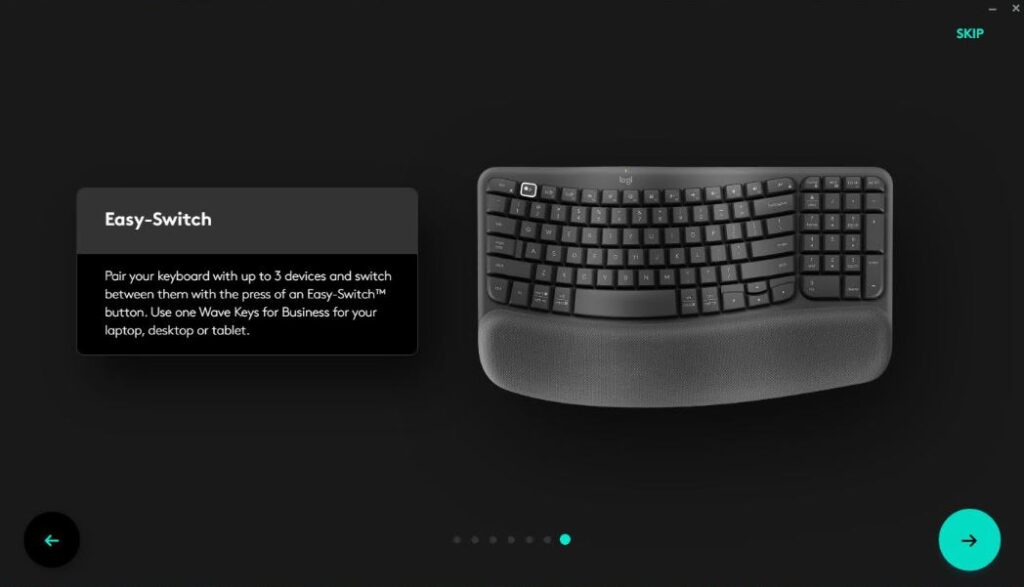
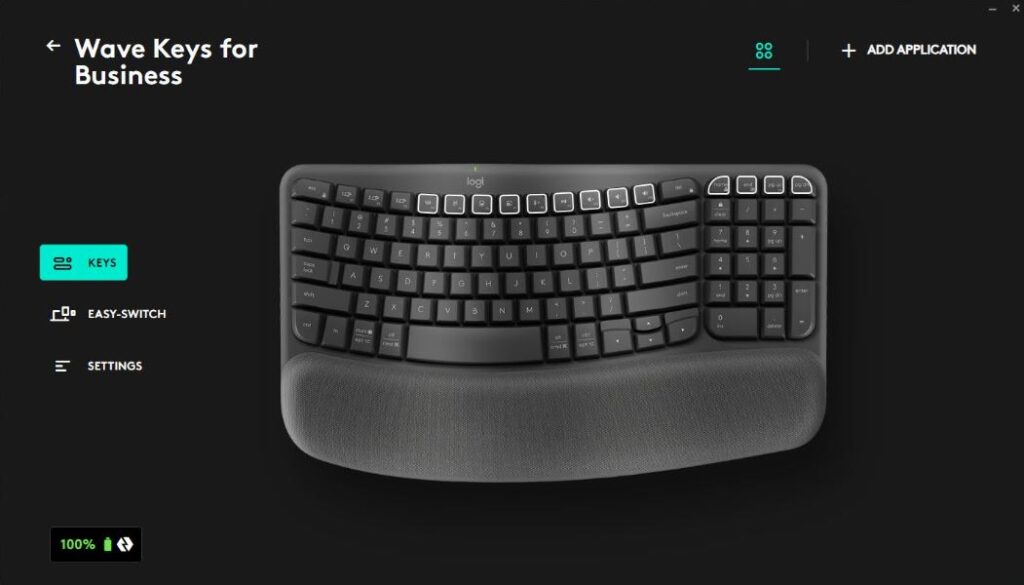
Conclusion
The biggest issue with the Logitech Wave Keys for Business ergonomic keyboard in our market is its price. If it really cost around $60, the Wave Keys would likely find its way into wealthier offices. However, at $60, it’s unlikely that any company would be eager to purchase just a single keyboard.
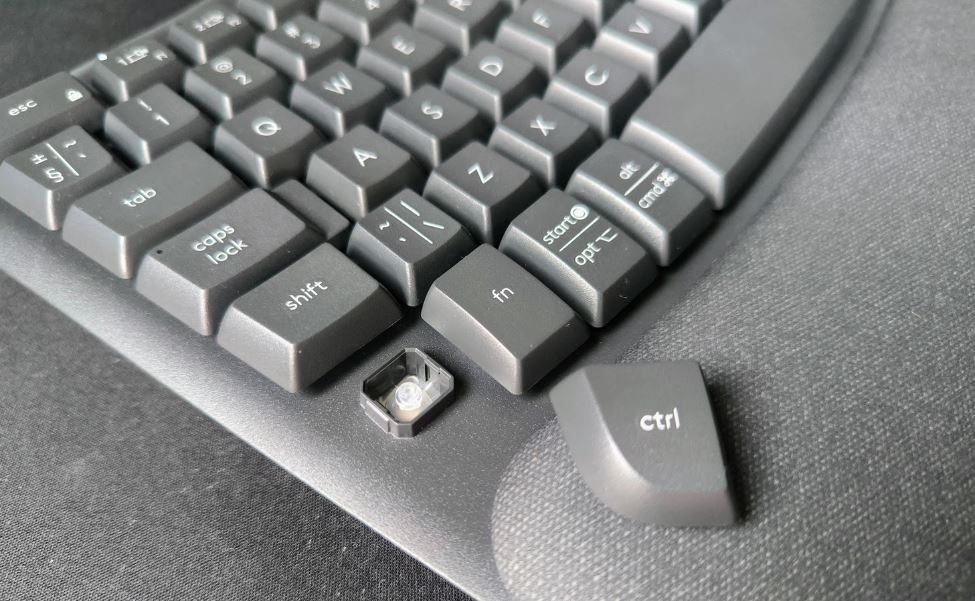
Of course, the Wave Keys keyboard offers a few features that Logitech likes to include in its more expensive devices, such as the ability to connect to multiple devices via Bluetooth. But again, you’d need a specific use case for this connectivity option to be truly beneficial.
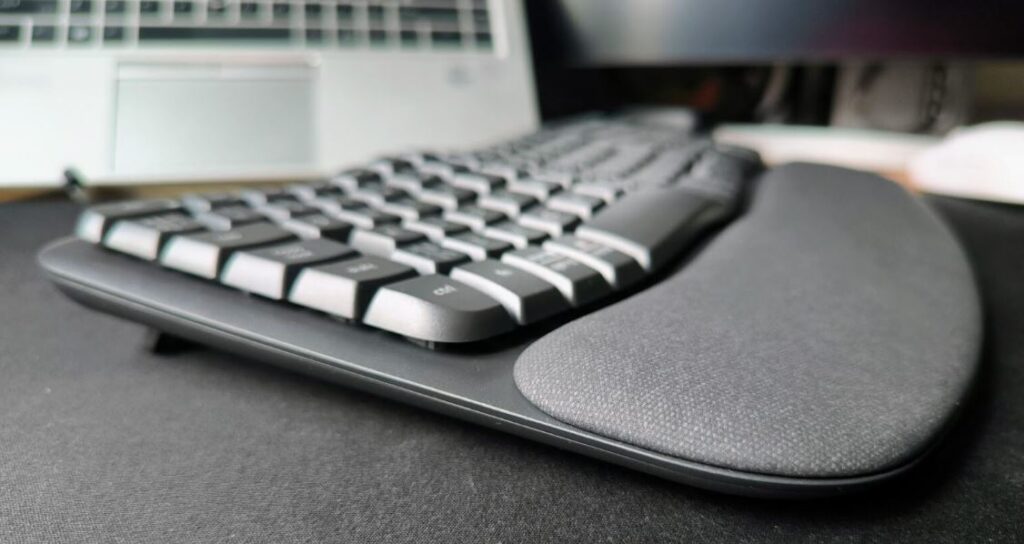
Overall, the Wave Keys keyboard is very comfortable and doesn’t require any adjustment period to start using it in everyday life. In summary, I’d say that the Wave Keys for Business ergonomic keyboard is super comfortable, but it ends up being unjustifiably expensive. Some online stores offer it for $50, which might be closer to the desired price, but it’s still not cheap for a membrane keyboard with a plastic build.Top of FormBottom of Form
